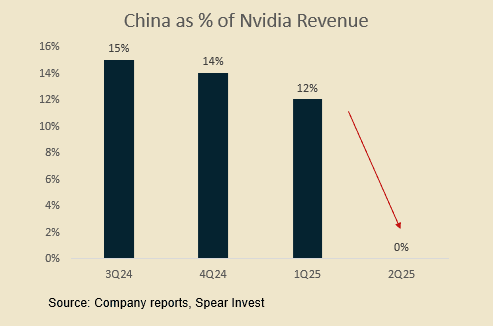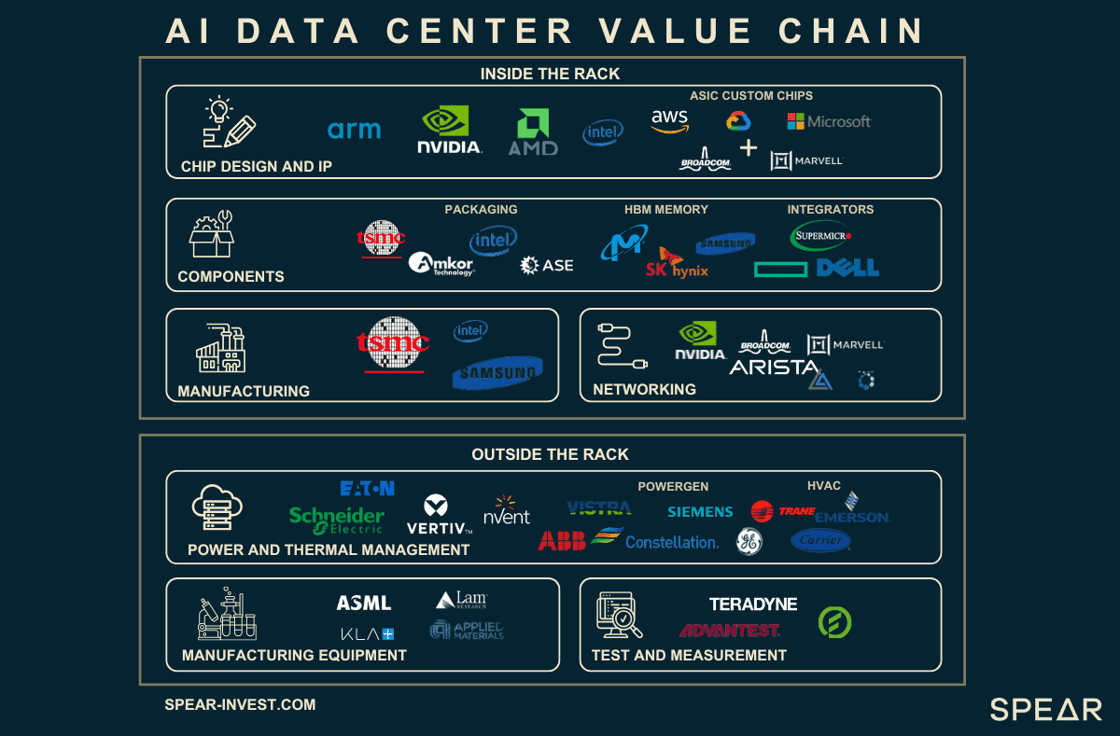SoFi shares rise as record revenue, member growth drive strong Q3 results
AI chips and the Data Center value chain are setting up for a blowout 2H. There are three main drivers:
1️⃣ Inference demand is about to explode.
2️⃣ Blackwell systems are reaching full production (GB 200/300).
3️⃣ ...and now China is opening up.
In this week’s Tech Edge, we highlight the latest developments related to China export regulations and how they impact the Data Center trade.
Our research digest is designed to keep you on the cutting edge of investments in data infrastructure, software, and cybersecurity.
This content is not intended to provide investment advice, and companies mentioned may or may not be holdings in our funds.
Data centers are on the cusp of another investment cycle.
1. Inference Demand Is About to Go Parabolic
Training large models has dominated the conversation, but inference—the deployment and running of AI models—is where the real volume is coming. Enterprise AI adoption is picking up, and demand for inference-capable chips is set to explode across sectors. AI Agents will be a significant driver of inference demand across many end-markets. Some examples:
Companies such as OpenAI and Preplexity are launching browsers with embedded AI Agents. Cybersecurity companies are launching AI Agents that build on mountains of data and prevent cyberthreats. CRM companies are launching AI Agents that can help with sales and marketing, identifying leads, etc.
Each one of these could be a $30B+ opportunity over the next 3–5 years. More on the Agentic AI in our Tech Edge from January ’25.
2. Blackwell Systems Are Reaching Full Production
Nvidia’s next-gen Blackwell architecture (GB200/300) is entering full-scale production. These chips are specifically designed for AI workloads and optimized for both training and inference. With shipments scaling in 2H 2025, they’ll be driving massive capex across hyperscalers and enterprises.
The big catalyst here is that, compared to the prior architecture (Hopper), Blackwell is significantly more complex and is going into brand-new data center builds. We are just starting to see the announcements for the next wave of investments (Meta (NASDAQ:META), Google (NASDAQ:GOOGL), Amazon (NASDAQ:AMZN)). More on this in next week’s Tech Edge.
3. And Now… China Is Back
This week’s headline: Nvidia (NASDAQ:NVDA) and AMD (NASDAQ:AMD) have secured export licenses for the H20, one of Nvidia’s data center-grade AI chips previously restricted from sale to China.
This represents a significant shift from the stance just months ago. Nvidia had projected that its China revenues—over $17 billion last year—would essentially go to zero. Today’s decision changes everything.
Why is lifting of the export restrictions a big deal.
As Nvidia CEO Jensen Huang bluntly put it: “If the U.S. won’t participate in China, Huawei has China covered.”
That’s not a future the U.S. government—or investors—wants to see. This move suggests regulators are beginning to recognize that completely ceding the Chinese AI market isn’t a viable strategy.
This week’s major headline: Nvidia and AMD have secured export licenses for the H20, Nvidia’s powerful data center AI chip that was previously restricted from being sold to China. This marks a major policy reversal, as just months ago, Nvidia warned that its $17 billion in China revenue could effectively vanish due to U.S. export controls.
We now expect a complete reversal both on the revenue front but also as a margin tailwind.

Both Nvidia and AMD had previously written down large amounts of China-specific inventory—$4.5B and $800M, respectively—under the assumption they’d never be able to sell them. That is no longer the case.
If those chips start moving, expect a margin pop in the near term, as these were already expensed but now turn into revenue.
The bigger implication? We may be entering a phase of more balanced, tech-informed regulation—where U.S. companies have a voice at the table.
Who Benefits?
While Nvidia and AMD are the obvious winners, this is a tailwind for the entire AI data center value chain—from chip designers and manufacturers to server integrators, networking providers, memory suppliers, and power supply and management solutions.
 In short, the AI boom just kicked off the next cycle and investors should start positioning for it.
In short, the AI boom just kicked off the next cycle and investors should start positioning for it.
